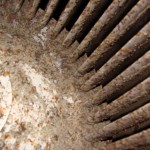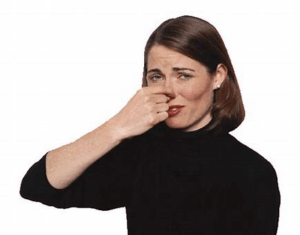 Mold Odors In Your Home and Possible Health Implications
Mold Odors In Your Home and Possible Health Implications
If you are looking for information on mold odors in the home and your health keep reading. However, if you are looking for a mold inspector who can help locate, diagnose, and give consultation on mold and mold odor problems click here for A Accredited Mold Inspection Service.
Many mold inspectors and many of our clients do not understand one very important fact about mold. Mold can produce mold odors in your home even when not releasing spores. These odors are actually complex chemicals. They are known as mVOCs or microbial volatile organic compounds. Mold odors are a serious contributor to health effects at many properties we perform mold inspection on.
Mold Odors and Your Health
What are Microbial Volatile organic compounds or (mVOCs) ? The musty smelling waste products molds release after digesting food are called MVOC’s. Exposure to mVOCs from molds can irritate the eyes and respiratory system. They have been linked to symptoms such as allergies and asthma.
In this inspector’s experience health complaints related to mold odor include the same types of allergy symptoms that mold spores produce. In fact, it is amazing how common it is for this mold inspector to find mold odors coming from walls or coming out of moldy AC ducts. Often people complain about building related illness in the exact same area where the inspector finds the odors.
Mold Odors Your Health and Scientific Studies
You do not have to believe me in regard to mold odor in the home and your health. After all, I am just some mold inspector putting stuff online. Any idiot can post anything online. Because of this, I have some links so you can see what some smart scientists in the indoor air quality field have said about mold odors or MVOC’s causing illness.
Links
Here is a study from Science of the Total Environment Volume 423, 15 April 2012, Pages 18-26. It confirms my own personal mold inspection related observations. Mold causes illness even when spore levels are not high.
Indoor Dampness and Molds and Development of Adult-Onset Asthma: A Population-Based Incident Case-Control Study. Finland Institute of Occupational Health at al. The study shows that visible mold growth and mold odor in the workplace have a similar strong correlation with the onset of new asthma in adults.
Here is a very quick read from the EPA about mold odor and it’s health effects.
The EPA states that mold odor can cause headaches, nasal irritation, dizziness, fatigue, and nausea.
Here is a study from Northern Europe on MVOC’s and asthma.
This study on mold odor and health indicated MVOC were significantly associated with an enhanced risk of multiple allergy symptoms, doctor-diagnosed asthma, and rhinitis, however, it was found only within severely damp homes.
And finally here is some info from the American Lung Association about VOC’s in the home and your health. It does not discuss MVOC’s specifically, however, it discusses general VOC’s from various common indoor sources in the home.
Mold Odors and Hidden Mold
Trapped Molds and Mold Odors
Hidden molds cannot release spores into the air. However, the MVOC’s or odors produced are just chemical gases. They easily escape to cause health complaints. A mold inspector can take a dozen samples from a home with hidden mold. Often none of the samples will tell you that you have hidden mold or where it is located. However, you may become sick from that mold because of the odors that escape into your air.
Mold In AC Ducts and Mold Odors
In other cases, the mold is growing in a vegetative manner like vines, and it does not release spores. Such molds will release odors that can cause health problems. This is common in moldy AC units and ducts. A mold inspector can take a dozen samples from a home with moldy AC ducts. Often none of the samples will tell you that your ducts are full of mold. However, you may become sick from that mold because of the odors it produces blow out of the duct.
Mold Odor and Your Mold Inspection
People living with mold odors in the home sometimes do not notice the odors till the inspector tells the client to stand in a specific spot. In many cases prior to the mold investigation one member of the family was barely aware of the odor while another member was not aware of it at all. However, such odors are often obvious to this inspector because of experience detecting them.

Very often mold odors in the home are from within AC units.
A trained inspector can often pinpoint the source of mold odor in your house.
Are you experiencing musty odors or mold odors in your home or office ?
Are you experiencing allergy or asthma type reactions when indoors?
Give us a call.
We provide mold inspections and mold testing in Southeast Florida.
A Accredited Mold Inspection Service, Inc.
1-888-381-6651






